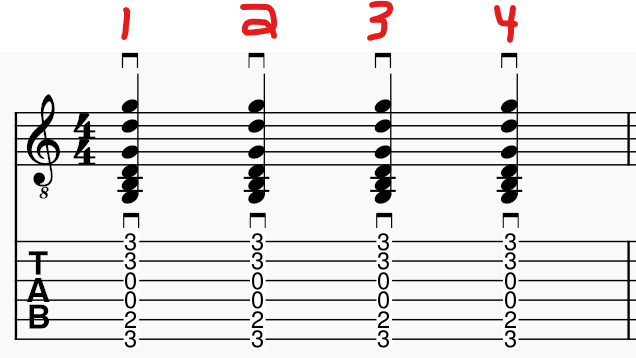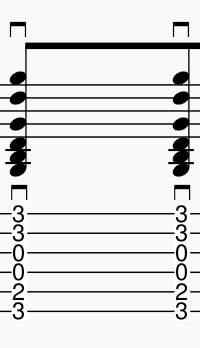Downstrokes vs Upstrokes: When Should You Strum Them? | Guitar For Beginners
Jan 27, 2024Do you ever see guitarists strumming up and down and wonder, “When am I supposed to strum up?” And, “When am I supposed to strum down?” Well today, I’m going to teach you exactly when to strum in each direction. This is critical for you to lock in because it’ll help you with the most important aspect of guitar playing: rhythm. Understanding and practicing correct downstrokes and upstrokes early on will save you from having to refine your technique and unlearn bad habits down the road.
Understanding Rhythm
4/4 Time Signature
Most songs are in 4/4 time (otherwise known as “common time"). This simply means that there are 4 beats per measure.

A measure is simply a fraction of the music used in a song. Each measure is like a pizza that we can divide into as many slices as we’d like.

Quarter Notes
In 4/4 time, each beat can be represented by a quarter note. Just as there are 4 quarters in a dollar, there are 4 quarters note beats per measure.

Quarter note beats aren't the only choice we have to play with. We can make notes ring out longer (e.g., half notes) or shorter (e.g., eighth notes).


Downstrokes: When To Strum Downward
Downstrokes
Represented by this symbol:

For best practice, downward strumming should occur for all notes that land where one of the 4 quarter notes would be in a measure.
For example, you would only strum downward for a measure of 4 quarter notes, two half notes, or one whole note.
Depending on the tempo of your song, you could even use downstrokes for eighth notes.

Upstrokes: When To Strum Upward
Upstrokes
Represented by this symbol:

Upstrokes are almost always used when playing sixteenth notes. Keep in mind that you would be alternating between downstrokes and upstrokes in a series of sixteenth notes. However, if you're a beginner, just know that sixteenth notes are not as common.

But what about faster tempos? In this case, strum upward for each eighth note that does not land on one of the 4 beats of the measure. In other words, you use upstrokes for the “in-between” notes.

When strumming chords, alternating downstrokes and upstrokes can be used to fill space and add a percussive element to the music. Here's an example of how upstrokes can be used to add variety to a song:

Conclusion
As you get more advanced with your playing, you'll learn that there are exceptions to these "rules". Regardless, knowing proper downward and upward strumming will always be the foundation of good rhythm. Locking in the good habit of knowing which direction to strum will only help you as you progress. If you don't do this and you realize down the road that your rhythm is weak, it'll only take longer to undo your bad habits. Best to do it right the first time.
Watch the full lesson here: Downward vs Upward Strumming: When Should You Play Each? | Guitar For Beginners
Optimize your practice routine in 5 minutes with my simple, powerful, scientifically driven tool for guitarists.


